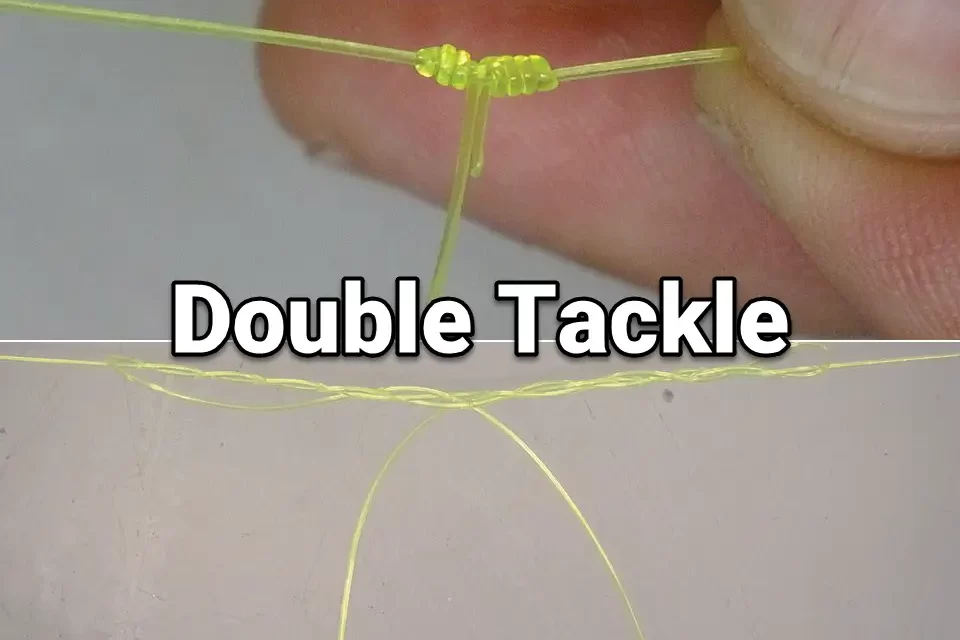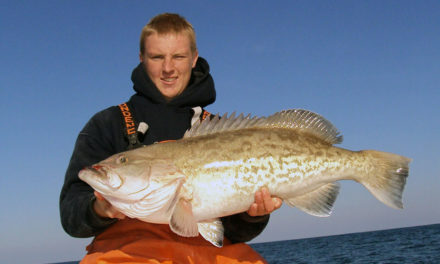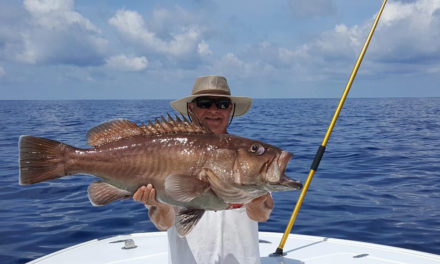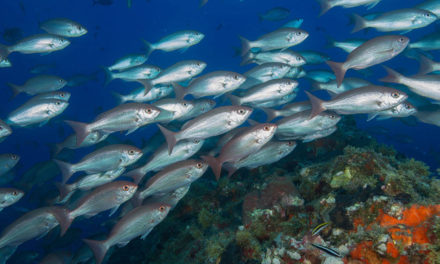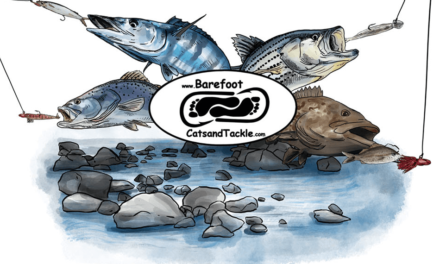this rig is extremely effective
Some folks refer to this as a “high/low rig,” and you can call it anything you want, but for this article, I’ll call it a “double tackle.”
First, consider the fish you are targeting and choose the correct size fluorocarbon for the leader. You can tie this knot in almost any size fluorocarbon up to 80—or 100-pound. A rig like this is highly effective on quite a few species and gets a lot of “reaction strikes” due to the multiple offerings presented and the erratic action of the baits.
A heavier jig on the bottom keeps the lighter jig, streamer fly, or unweighted soft plastic in place. It’s less likely to foul and makes the action more erratic, which draws the instinct strikes. The darting action resembles a scared or confused baitfish, which is irresistible to predatory fish, and the trailing bait is an easy target. These are the baitfish they are programmed to eat since birth. It makes perfect sense, as they exert less energy to catch disoriented baitfish than those swimming perfectly in open water.
Two primary considerations when choosing the poundage of the fluoro leader material are water clarity and quarry. After selecting the correct size jigs and fluoro, it’s time to determine the lengths of the two legs of the rig. I start with about a 4—or 5-foot leader length and make a 10—to 12-inch diameter loop in the center of the leader. This setup is typical for smaller inshore or freshwater fish, but it can be made larger and longer for larger fish and jigs for various offshore fish.
Next, make eight turns with one of the tag ends through the 1-foot-diameter loop. Find the center wrap of the tag end and separate it large enough to pass the loop back through (as shown in the photo).
At this point, hook the 1-foot diameter loop onto something that allows you to pull all three legs of the tackle together with equal pressure and lubricant (saliva). Pull the two tag ends HARD and the loop to secure the knot down tight. Clip one of the two sides of the loop (shown in photo at the top of the page), and make the second leg of the “double tackle.”
This technique might sound complicated, but it’s actually quite simple. You can view more videos by visiting Tim Barefoot’s YouTube channel. Or, view this title “Double Tackle.” Visit barefootcatsandtackle.com for fishing tackle and how-to videos.
To purchase any of Tim Barefoot's tackle mentioned above visit: BarefootCatsandTackle.com. He also has a wide variety of how-to videos for Freshwater or Saltwater fishing.
FRESHWATER TACKLE YOU MIGHT WANT TO TRY:
For smaller freshwater fish, try the:
Size #6: Target fish include Panfish, Bluegill (Bream), Sunfish, and Crappie. Also great for Trout, Carp, White Perch, and more.
For larger freshwater fish, try the:
Size 1/0: Target fish include Largemouth Bass, Smallmouth Bass, Larger Trout, Carp, Walleye, Catfish, and more.
Barefoot Jig: Target fish include Trout (speckled and gray), Drum (red and black), Flounder, Striped and Hybrid Bass, Catfish, Largemouth Bass, Smallmouth Bass, Walleye, and more!
For larger catfish, try the:
7/0 Catfish Circle Hook: Target fish include Blue, Bullhead, Channel, Flathead, and White Catfish.
SALTWATER TACKLE YOU MIGHT WANT TO TRY:
7/0 and 11/0 J-Hook Ching Weights: Target fish include Tuna, Wahoo, Mahi or Common Dolphin, King Mackerel, Wahoo, and more. Easy to rig!
4 oz. Crab Decoy Jig: Target fish for Striped Bass, nearshore Drum, Snook, Grouper, west coast bottom fish, and more.
4 oz. Tuna Squid Decoy Jig: From the eastern, western, Alaskan, and gulf coasts, target fish include: Tuna, Dolphin, Wahoo, Fluke, Flounder, Striped Bass, Seabass, Amberjack (east coast), Yellow Tail (west coast), California White Sea Bass (west coast), Grouper, Snapper, Halibut, Ling cod, and all Alaskan bottom fish.
8 oz. - 12 oz. 10/0 Squid Decoy Jig: Catch BIG Grouper, Amberjack, Giant Stripers, and more.

